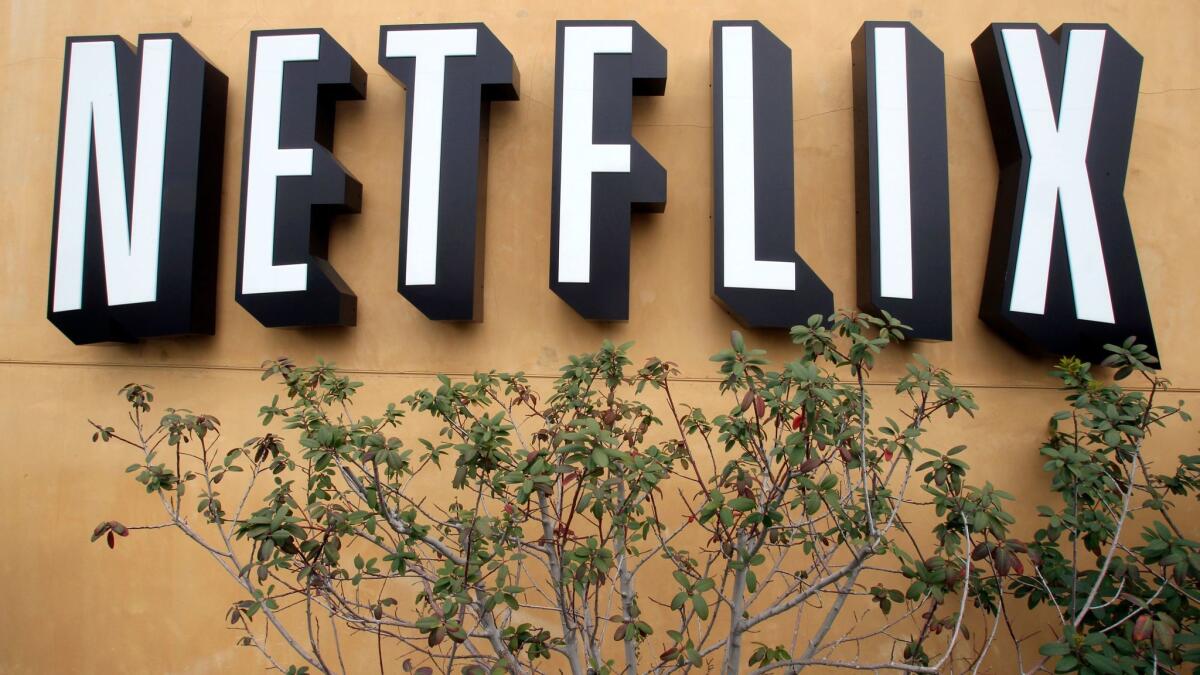Netflix sinking deeper into debt to fuel subscriber growth

- Share via
Netflix is sinking deeper into debt in its relentless pursuit of more viewers, leaving the company little margin for error as it tries to build the world’s biggest video subscription service.
The big burden that Netflix is shouldering hasn’t been a major concern on Wall Street so far, as CEO Reed Hastings’ strategy has been paying off.
The billions of dollars that Netflix has borrowed to pay for exclusive series such as “House of Cards,” “Stranger Things” and “The Crown” have helped its service more than triple its global audience during the past four years — leaving it with 109 million subscribers worldwide through September.
That figure includes 5.3 million subscribers added during the July-September period, according to Netflix’s third-quarter earnings report released Monday. The growth exceeded management forecasts and analyst projections. Netflix’s stock increased 2% in extended trading, putting it on track to touch new highs Tuesday. The shares have increased by about five-fold during the past four years.
But Netflix’s subscriber growth could slow if it can’t continue to win programming rights to hit TV series and movies, now that there are more competitors, including Apple, Amazon, Hulu and YouTube.
If that happens, there will be more attention on Netflix’s huge programming bills, and “then we could see an investor backlash,” CFRA Research analyst Tuna Amobi says. “But Netflix has been delivering great subscriber growth so far.”
Netflix’s long-term debt and other obligations totaled $21.9 billion as of Sept. 30, up from $16.8 billion at the same time last year. That includes $17 billion for video programming during the next five years, up from $14.4 billion a year ago.
The Los Gatos, Calif., company has to borrow to pay for most of its programming expenses because it doesn’t generate enough cash on its own. Netflix burned through another $465 million in the most recent quarter, which is known as “negative cash flow” in accounting parlance.
For all of this year, Netflix has warned that its negative cash flow might be as high as $2.5 billion, a trend that management expects will continue for at least the next several years as its service tries to diversify its video library to appeal to the divergent tastes in about 190 countries.
Despite the huge cash outflow, Netflix has remained profitable, under U.S. accounting rules. The company earned $130 million on $3 billion in revenue in its latest quarter.
And management appears to be trying to ease the financial drain with price increases of $1 and $2 a month for most of its 53 million subscribers in the U.S. before the end of the year. The higher prices are likely to increase Netflix’s revenue by about $650 million next year, RBC Capital Markets analyst Mark Mahaney predicted.
But the price increases could backfire if it provokes an unusually high number of subscribers to cancel, something Netflix faced when it raised rates in the past. Most analysts say that’s unlikely to happen this time, and Netflix supported that thesis with its growth forecast for the current quarter. Management expects to add 6.3 million subscribers during the October-December period, slightly more than what analysts are anticipating, according to FactSet.
Netflix has long argued its borrowing makes sense to gain a huge advantage over rivals as people increasingly watch programming on internet-connected devices. Plus, management points out that its total debt is small compared with its market value of nearly $90 billion.
With such a valuable stock, Netflix theoretically could sell more shares to raise money — similar to how homeowners sometimes use the equity accrued in their houses to pay big bills.
But that would be more difficult to do if Netflix’s stock price plummets amid concerns about its debt.
More to Read
Inside the business of entertainment
The Wide Shot brings you news, analysis and insights on everything from streaming wars to production — and what it all means for the future.
You may occasionally receive promotional content from the Los Angeles Times.










